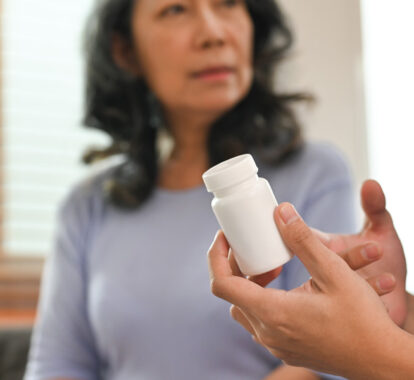Six Common Myths About Sexually Transmitted Diseases
May 3, 2017

April is sexually transmitted disease awareness month.
Perhaps it’s the type of celebration that falls last in San Antonion’s and Austinite’s minds in April. But, the awareness and education is necessary.
Do a quick Google search on sexually transmitted diseases (STDs) in San Antonio and Austin, and you will come across STDCheck.com, a STD testing service with 4,500 locations throughout the country.
In 2015, they ranked Austin and San Antonio in the Top 10 Cities with the most patients who test positive for STDs. It’s a ‘Top 10’ list our cities shouldn’t be on.
Both the Austin and San Antonio areas have seen improvement when it comes to STD ranking. As of 2020, neither city is in the Top 10 list of cities with the highest rates of STD’s. In fact, neither location is in the top 20.
Austin ranked 56th with the following instances of infection:
| Number of STD cases per 100K 29 | 1,006 |
| HIV cases | 221 |
| Chlamydia cases | 8,946 |
| Gonorrhea cases | 3,306 |
| Syphilis cases | 310 |
San Antonio ranked 74th with the following instances of infection:
| Number of STD cases per 100K 29 | 896 |
| HIV cases | 368 |
| Chlamydia cases | 12,986 |
| Gonorrhea cases | 4,496 |
| Syphilis cases | 314 |
If you are sexually active, you are at risk for STDs. You may be unaware of the infection, as STDs often do not have recognizable symptoms.
The Centers for Disease Control and Prevention’s (CDC) most recent estimates show that there are about 20 million new infections in the United States each year, costing the American healthcare system nearly $16 billion in direct medical costs alone. America’s youth represent the largest group of those infected.
In San Antonio, reported cases continue to rise, which was reported by the San Antonio Metropolitan Health Department in the San Antonio Express-News. They attribute this rise to better, more convenient testing.
“If you are sexually active and not in a monogamous relationship, get tested,” said Dr. David Gude, Chief Operating Officer at Texas MedClinic. “Knowing the facts, being tested, and receiving treatment can prevent future complications.”
Think you know all about STDs? Here are six common myths and the real facts about STDs that can help you make good decisions in the future for your sexual and reproductive health.
Myth #1: A pap smear detects sexually transmitted diseases.
Fact: A pap smear does not detect STDs. It is a screening test for cervical cancer.
Newer means of testing for STDs are through urine and blood tests. It is seldom necessary to collect cervical or penial specimens as in the old days. Talk to your doctor about STD testing options.
Myth #2: Symptoms of sexually transmitted diseases are easily recognizable.
Fact: Wrong. Symptoms are not always easily recognizable.
Many patients with Chlamydia or Gonorrhea show no symptoms at all. Less than 30 percent of people diagnosed with Trichomoniasis develop symptoms. The painless syphilis sore that you would get after you are first infected can be confused for an ingrown hair, zipper cut, or other seemingly harmless bump. The lesion will clear without treatment over 14 days, but the infection is still there and should be treated. Herpes or HSV-2 have mild symptoms that can go unnoticed or be mistaken for another skin condition.
If you are sexually active, have multiple partners, are a man having sex with a man or are not using condoms, talk to your doctor of about STDs.
Myth #3: You can’t contract an STD through oral sex.
Fact: You CAN contract STDs through oral sex, including chlamydia, gonorrhea, syphilis, herpes and HIV. These STDs can be contracted from mouth-to-penis contact or mouth-to-vagina contact. The American Sexual Health Association provides details on prevention and statistics.
Myth #4: Once you have contracted an STD and have been treated, you can’t get it again.
Fact: You can contract an STD again even after successful treatment. The only way to avoid STDs is to not have vaginal, anal, or oral sex. If you are sexually active, here’s what you can do to lower your chances of contracting an STD:
A long-term mutually monogamous relationship with a partner who has been tested and has negative STD test results will minimize the chances of contracting an STD;
Using latex condoms the right way every time you have sex will minimize the chances of becoming infected.
Myth #5: STDs don’t have an impact on pregnancy, childbirth or newborns.
Fact: STDs have a wide variety of effects on pregnancy, childbirth and newborn children.
Chlamydia and Gonorrhea can cause serious, permanent damage to a woman’s reproductive system, making it difficult or impossible for her to get pregnant later. Chlamydia can also cause a potentially fatal ectopic pregnancy.
If you are pregnant and have gonorrhea, you can give the infection to your baby during delivery. This can cause serious health problems for your baby.
A mother infected with syphilis can pass the disease to her unborn child, either during pregnancy or in childbirth. A newborn infected in this manner has congenital syphilis.
The HIV virus can be transmitted from mother to child during pregnancy, vaginal birth and while breastfeeding. If you are HIV-positive, treatment with a combination of HIV medicines called antiretroviral therapy or ART can improve your health and greatly lower the chance of passing HIV to your baby.
Myth #6: Treatment for STDs is painful.
Fact: Chlamydia, Gonorrhea, Trichomoniasis and Syphilis are bacterial infections treated with a course of antibiotics, either with a prescription or through injection.
Herpes is an infection caused by the herpes simplex virus (HSV). HSV can cause sores and lesions around the mouth and genitals. HSV-1 typically causes oral lesions while HSV-2 is the typical cause of genital herpes. However, it is important to understand either type of HSV can infect any area of the body.
Common Myths About Herpes
Myth #1: Herpes isn’t that common.
Fact: One in every six Americans age 14 – 49 have genital herpes.
Myth #2: Herpes only affects the genital area.
Myth #3: Herpes can be contracted from dirty toilets.
Fact: You cannot contract herpes from toilet seats, bedding, or swimming pools.
Myth #4: I will know if I have herpes.
Myth #5: Wearing a condom or dental dam will prevent me from catching or spreading herpes.
Fact: Not all herpes sores occur in areas covered by condoms or dental dams.
Ways to Reduce Your Risk of Herpes Infection
If you or your partner have herpes, you can still reduce the risk of spreading infection by:
- Taking anti-herpes medication daily. Talk to your doctor to find out what medication is right for you.
- Avoid sexual activity during a herpes outbreak.
Know the facts on STDs: Talk with your doctor.
Sources
1. 10 US Cities with the Most Positive STD Tests (2015)
2. Centers for Disease Control and Prevention
3. American Sexual Health Association




